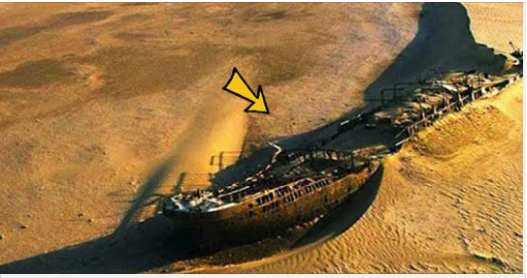In a remarkable archaeological breakthrough, the remains of a Portuguese warship that vanished over five centuries ago have been unearthed in the desert of southwest Africa. This extraordinary find, which includes a treasure trove of gold coins, has captivated historians and archaeologists alike.
The ship, which set sail from Lisbon on March 7, 1533, was lost to history until its remnants were discovered in 2008 during diamond mining operations along Namibia’s coast. The vessel was en route to India when it encountered a fierce storm that caused it to capsize, sinking with valuable cargo, including copper and gold ingots. Remarkably, the excavation revealed that nearly all of the ship’s cargo, including two thousand pure gold coins and thousands of pounds of copper ingots, remained largely intact.
Uncovering the Shipwreck
The shipwreck yielded not only gold coins but also an array of intriguing artifacts. Dr. Noli, a senior archaeologist at the Southern Africa Institute of Maritime Archaeological Research, notes that while shipwreck discoveries are not unusual given the region’s recent storm activity, the rapid recovery of a treasure chest filled with gold coins from 1533 was unexpected. This find confirmed the ship’s origin and provided valuable historical insights.

Dr. Noli suggests that the ship, likely named Bom Jesus, sank off the coast of Namibia after a violent storm drove it dangerously close to shore, leading to a collision with a rock. The ship’s eventual emergence in the desert was attributed to the receding waters. Despite the extensive damage from the storm, the absence of human remains implies that the crew either drowned or escaped before the ship was fully submerged.
Artifacts and Historical Context
Further investigation of the site uncovered a variety of artifacts, including bronze bowls and long metal poles identified as cannons. The excavation also revealed muskets, metal fragments, swords, astrological instruments, compasses, and a time capsule, alongside additional silver coins. These findings suggest that the ship was traveling from Lisbon to Western India, a common route for Portuguese vessels of the period.
Preservation and Future Prospects
The shipwreck, now located in Sperrgebiet or “forbidden territory,” a region once explored by German diamond prospectors, stands as a significant historical treasure. Currently, the site is protected by mine security and remains accessible only to a select group of individuals. Although there have been discussions about establishing a museum to house the artifacts, no concrete plans have been made.
Legacy of the Discovery
This extraordinary discovery offers a fascinating glimpse into the maritime history of the 16th century and highlights the wonders hidden beneath the Earth’s surface. It not only enriches our understanding of past voyages but also underscores the ongoing allure of historical exploration and preservation.






